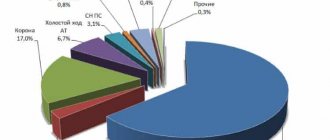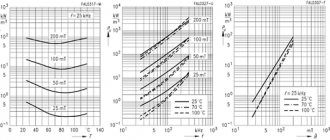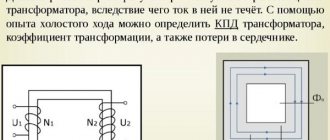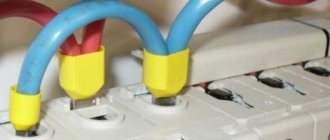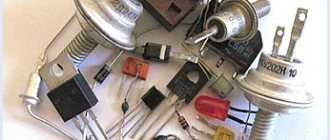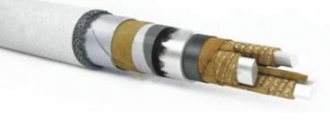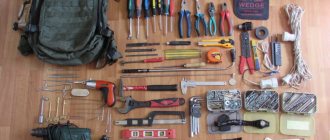Despite the fact that the concept of “measure to reduce electricity losses” seems clear without much explanation, it is still necessary to specify which actions aimed at reducing losses can be attributed to SMEs.
For example, such an event to reduce money theft as locking safes with a key would look strange. The fact that they were not closed is simply a bungling, and establishing basic order cannot be considered an “event.” At the same time, such actions as sealing meter covers and eliminating vibration of their bases are given in some regulatory documents as SMEs. It seems that in order to increase the effectiveness of work to reduce commercial losses, it is necessary to first install meters in open places, where “the rain wets them and covers them with dust,” and then plan for SMEs in the form of installing protective boxes. You can also expose them to the cold, and then (as an SME, of course) install heating devices.
Here are three mandatory conditions under which an action aimed at reducing losses can be considered an activity to reduce them
First of all, only measures that reduce losses in the network and in equipment that initially operate under normal technical conditions can be classified as SMEs. Bringing conditions within technically acceptable limits is not SME. Replacing meters with higher grade meters is an SME; sealing covers and eliminating vibration of meter bases, eliminating the operation of meters in unacceptable conditions, checking and calibrating meters with overdue dates, etc. - no. Replacing CTs with unreasonably high rated currents with lower ones is SME (since the previous CTs operated under technically acceptable conditions), but eliminating overload of their secondary circuits is not.
The same applies to SMEs, which sometimes require significant costs. The author had to see unique cases in practice, for example, a 10 kV feeder with a length of more than 160 km. At the end of this feeder the voltage was below 6 kV. The disaggregation of such a feeder cannot be considered an SME (almost all 0.4 kV networks did not comply with GOST requirements for power quality), although the resulting reduction in losses should be taken into account when determining the loss standard.
The second condition is the absence of a negative impact of the event on the safety of personnel, the quality of their duties, the reliability of power supply and the quality of supplied electricity. The duration of work on planned equipment repairs should be determined in accordance with technically and economically sound standards; speeding up such work increases the risk of an accident and reduces the quality of repairs. It is unreasonable to set the goal of reducing the duration of planned repairs in comparison with standards.
The standard duration of emergency repairs is generally difficult to establish due to the dissimilarity of the consequences of different accidents of the same type. Given the mixed assessment of the usefulness of reducing the duration of planned repairs and the uncertainty of the initial indicator in the case of emergency repairs (reduce the duration - compared to what?), reducing the duration of repair work cannot be considered an encouraged measure to reduce electricity losses.
The third condition is the performance of specific work specifically for the purpose of reducing losses. Actions that result in concomitant loss reduction are not SMEs. For example, the main goal of carrying out repairs of energized overhead lines is not to reduce losses, but to maintain during the repair the possibility of transmitting the required volumes of electricity without restrictions and without reducing the reliability of power supply, therefore these works cannot be considered as SMEs. In addition, carrying out repairs of overhead lines under voltage does not reduce losses compared to their actual value, but only ensures that they do not increase.
The effect of such work can be determined according to the principle “it could have been worse.” At the same time, in existing reporting, this effect is combined with the effect of other activities. When determining losses after MSP, the total effect determined in this way is subtracted from the initial value of losses, which is an obvious error. The inadmissibility of including such work in the list of SMEs can be considered the fourth condition.
In addition to the conditions under which an action aimed at reducing losses can be considered an event to reduce losses, it is also necessary to note the conditions under which SMEs can be included in the regulatory document establishing reporting on their implementation. It is useful to provide a list of any possible SMEs in educational literature. The condition for including an event in the list of reportable SMEs is, firstly, the existence of a way to clearly quantify its impact on losses, and secondly, at least some preliminary assessment of its weight. The efficiency of SMEs can only be measured in terms of kilowatt-hour savings.
If there is no method of quantitative assessment (although it is clear that the planned work will lead to some positive effect), such SMEs should not be contained in the regulatory document establishing reporting on their implementation. Establishing reporting for each small SME with assigning a code to it (for subsequent processing) is, in the author’s opinion, a relapse of the socialist system of total planning and an inexplicable desire to know, for example, how many meters in Russia stopped vibrating in the reporting year.
Reporting on the volume of SMEs conducted in units of “number of settlements” has no practical value at all. Even more counterintuitive is the level of detail in documents submitted at the SME planning stage.
The question of the need for reporting on completed (and especially planned) SMEs can be posed more fundamentally. Conducting SMEs is an internal matter of the network organization. The network organization is more interested in their implementation than the organizations requiring such reporting. All external influences on the network organization in terms of electricity losses should be limited to the establishment of loss standards.
The stability and reliability of electrical networks are no less important indicators than the level of losses, but in these areas there is no centralized system for planning and reporting activities to improve these indicators. Reporting accidents has a completely different meaning. Reporting on planned and completed SMEs only burdens specialists of network organizations with unnecessary work; it is not used in any country in the world with a market economy and, in the author’s opinion, should be abolished.
Terminology in the field of SMEs also requires clarification. The division of SMEs into organizational and technical does not reveal their essence. To carry out any SME, organizational efforts are required, and any SME is technical (not humanitarian!). 201 Therefore, all actions preceding the actual implementation of SMEs should be considered “measures for organizing work to reduce electricity losses.” These include:
- issuance of organizational and administrative documents establishing the responsibility of departments and specific individuals for various areas of work to reduce losses;
- carrying out activities to improve the skills of employees;
- implementation of loss calculation software;
- carrying out calculations to determine the structure of losses, analyzing losses in order to identify places with increased losses, selecting SMEs with an assessment of their effectiveness;
- development of an SME plan;
- allocation of funds and material resources for the acquisition of necessary equipment, its delivery and installation;
- development of a system for stimulating personnel to reduce electricity losses;
- introduction of a monitoring system for the implementation of work to reduce electricity losses and a corresponding system for their accounting and analysis;
- establishing in power supply contracts the conditions for the consumption of reactive energy by consumers in accordance with current regulatory documents.
Actually, measures to reduce losses are practical actions that lead to a real reduction in losses. Based on the characteristics of obtaining the effect, SMEs can be divided into the following four groups:
- measures to improve the operating modes of electrical networks;
- measures for the reconstruction of electrical networks carried out to reduce losses;
- measures to improve the electricity metering system;
- measures to reduce electricity theft.
The influence on consumers in order to implement the reactive energy consumption regimes established in power supply contracts (including through the installation of CPs in their networks) can hardly be considered an event to reduce losses carried out by the energy supply organization, due to the absence of a mechanism for such influence. The consumer has the right to both install the heater and pay for the increased consumption of reactive energy.
In the second case, there is no reduction in losses; the energy supplying organization only receives monetary compensation for them. What could be the “impact” that forces the consumer to choose the first path? In addition, the energy supplying organization often prefers to receive monetary compensation without particularly insisting on the installation of the heat exchanger. These issues are discussed in more detail in Chap. 7.
The electrical network consists of at least 3 key components:
- Generator;
- Consumer;
- Network of wires or power line.
This is an ideal scheme, but in reality it consists of many thousands of wires, several kilometers long, equipment and numerous substations. All of them connect network participants with each other. At the same time, electricity losses occur at each link. As a result, the consumer receives electricity not in the quantity supplied, but in the quantity actually transferred. To prevent these losses from reaching large values, suppliers are constantly looking for solutions, using different methods and techniques. But to select them, it is necessary to determine the cause of the loss of electricity.
They are conventionally divided into:
- Production;
- Technological;
- Commercial.
Measures to improve the electricity metering system include:
- replacement of instrument transformers with transformers with increased accuracy classes and rated parameters corresponding to actual loads;
- replacement of existing electricity meters with new devices with improved characteristics;
- installation of technical electricity metering devices on radial lines extending from substations (head metering).
Measures to reduce electricity theft include:
- periodic inspections of the operating conditions of consumers' electricity meters and detection of electricity theft;
- replacement of conventional “bare” aluminum wires on 0.4 kV overhead lines with insulated wires, making it difficult for unauthorized connection to the line.
Let's take a closer look at each of them.
Commercial losses occur for the following reasons:
- Errors in calculations and indications;
- Illegal use of electricity;
- Wrong tariffs.
Special calculations and determination of the loss category allow you to reduce non-target costs. For example, technological ones are the task of the electricity consumer. It is possible to reduce losses by adjusting tariffs or upgrading equipment.
Commercial losses affect the supplier’s profit, so special control is carried out over illegal connections, control departments are working, and automatic data collection systems are being introduced.
Technological losses occur during the transmission of electricity through power lines.
Methods of transmitting electricity
Introduction to peak and other electricity tariff zones
The most common two methods of transmitting electricity are using overhead and cable lines. They differ from each other in range and environment in which the conductor is located.
Overhead lines are, simply put, copper or aluminum conductors suspended through insulators on metal or reinforced concrete supports. With this method, it is possible to transmit electricity over long distances and between different countries.
Cable line - laying wires underground. Individual current-carrying conductors are located, as a rule, in rubber or PVC insulation. If the voltage is high, then there is also armor made of metal tape. It also serves as a shield against interference. It is found mainly within the city or enterprise.
Cable routing
Additional Information. Using cable lines, it is possible to transport electricity along the bottom of reservoirs and even seas. This allows electricity to be supplied to the islands. The use of power lines does not imply such possibilities.
How to reduce power transmission losses?
There are 2 options: reduce the resistance of the wires or the current in the power line. For the first option, wires made of copper and aluminum are used and their cross-section is increased. It is important that the wires are light in weight and the use of perforated cable trays is recommended. Busbar trunking is also used to reduce losses. Its use allows you to save a considerable amount.
In order to reduce the current in a power line, a transformer or station is used.
You can also reduce costs using the following effective methods:
- Optimization of the circuit and operation of the electrical network;
- Equipment modernization;
- Decrease in total power;
- Transformer load optimization.
The selection of the method is carried out by specialists individually for each specific case.
Conclusion
Reducing electricity losses during transmission is a complex work. Of course, this process is very difficult and often financially expensive, but if you achieve the desired result, all your efforts will quickly pay off. The main thing is to do it correctly, competently, and take into account all the details and features. Both parties should be interested in this issue, since only with this approach it is possible to reduce losses and at the same time significantly reduce costs. It is impossible to avoid losses, but it is possible to minimize them. To do this, it is worth using modern equipment, an innovative approach and the experience of leading specialists.
How to order?
Call 983-5049 or email (bottom right).
Initial data: For the calculation, you will need data on the cross-section of the cores, material, length of the supply cable, and the estimated power of the electrical installation. Estimated number of operating hours of the electrical installation per month. If there is a transformer on the subscriber’s balance, its data.
The price for calculating electricity losses as in the example is 2000 rubles. For organizations, payment by bank transfer with VAT is possible.
Owners of electrified facilities began to think about energy losses during its transmission relatively recently. At the same time, this is a fairly important parameter that should definitely be taken into account by owners of private houses, agricultural and other enterprises.
To the question of how to calculate electricity losses , there is one simple answer - contact specialists. Carrying out such calculations is considered a rather labor-intensive and complex task, the implementation of which requires professionals who are familiar with the necessary formulas and who know how to use such formulas.
Preventing trading losses. Cash line
- Articles
- Security solutions
- Preventing trading losses. Cash line
17 January 2013
- Share
The Russian retail market in most segments is not only constantly increasing its turnover, but is also becoming more “mature” and highly competitive. This leads to the fact that, along with the constant growth in sales volume and retail space, many retailers are concerned with the problem of reducing losses .
According to the data appearing in the press, according to information from our customers, and also based on our own observations, we can say that the total amount of losses of trading enterprises varies from 0.2 to 5% of turnover. Much more often, of course, this figure still remains within 2%, but for a chain retailer even such a percentage results in very significant amounts.
All losses in the process of functioning of a retail enterprise are divided into natural (the notorious “shrinkage, shrinkage” and much more) and malicious. In more detail, the second section can be divided into the following subsections:
- theft from customers on the sales floor;
- checkout fraud;
- theft and fraud of both our own employees and representatives of suppliers when accepting goods;
- non-commodity non-cash financial fraud schemes;
Other types of malicious losses (for example, “eating food by loaders in a warehouse”) amount to such an insignificant figure that the fight against them is determined more by the visibility of the result and the visibility of the measures taken than by a perceived need.
The meaning of “theft on the sales floor” is often exaggerated. Of course, it is also necessary to fight against “shoplifters”, as well as against “unscrupulous managers”, but according to available statistics, an enterprise incurs up to 70% of losses due to the actions of its own employees, and more than half of this leakage (from 30 to 50% of the retailer's total losses) occurs at the checkout. In some hypermarkets, only identified documented losses at checkouts exceed 0.5 million rubles. per month for 1 point, and how many have not yet been identified... We will talk in this article about how to block this channel, how to make the checkout line an area of the store unsuitable for fraud.
Cashier is a profession associated with the movement of cash, and, as in all such cases, among cashiers there are many inventive, but dishonest people. Over 10 years of working to prevent losses in retail, we have identified more than 80 methods of fraud at the checkout, from the simplest to the most complex. Some of the thefts are committed by the cashier himself, while other options require the participation of an “accomplice” playing the role of a “buyer.”
Typical examples:
- Without the participation of the buyer: The cashier punches the goods, the buyer does not take the receipt, leaves with the goods, the cashier performs the “return” operation, puts the money in his pocket. If the “return” operation is complicated by the need for the intervention of a senior cashier, then either this option of theft is not used, or is supplemented by collusion with the senior cashier, and acquires greater scope.
- In collusion with the buyer: The “accomplice” takes out a whole cart of various expensive products, instead of which the cashier sells an underestimated amount of cheap ones. Instead of cognac, there is beer and so on. As a rule, under the pretext of a “non-working label”, manual entry of the product code is used, although there are also more cunning cashiers who stick labels with the barcode of a cheap product, for example, on the bracelet of their watches. From the outside, everything looks very decent - the barcodes are read, the cash register beeps with satisfaction, the goods are pushed through... And at this moment the store is shamelessly robbed!
How to deal with theft at checkouts?
Over the years, commercial enterprises have developed many methods of such struggle. Not all methods are effective, and a very small part may be effective, regardless of local conditions and the specifics of the store.
Let's start with the simplest thing: many enterprises try to limit themselves to disciplinary and administrative measures. For example, divide the entire shortage among the store team and write it off proportionally from the salaries and bonuses of employees, or another option is to carefully check each candidate for the position of cashier, making sure both that he has no tendency to deceive the employer, and that he is not involved in such actions in past. These methods are considered by many to be “proven, dating back to Soviet times,” however, their advocates forget that even in the past, disciplinary sanctions were not always effective, and in the changed realities they can only work in the most remote outback, where there is one store for every three There are villages scattered across the taiga, and there is no other job for the cashier. Unfortunately, employee turnover is well known to any retailer, and an attempt to resolve the issue with fines and penalties will lead to a significant increase in this turnover, and an employee who is fined “along with everyone else” and not involved in theft often thinks “if I’m still suffering innocently, then I will too.” drag a little at a time to compensate for your lost wages.” A truly effective personnel check is possible only if there is a small number of personnel and low turnover, i.e. This method is clearly not suitable for large chain stores, and it rarely produces results in small stores. The result of disciplinary and administrative measures applied without technical support is usually not a reduction, but a noticeable increase in losses and costs.
Attempts to control cash line workers using video surveillance systems are also quite common. In this option, video cameras are installed so as to see the cash register tape and everything that is on it in as much detail as possible. They try to set the resolution of such cameras higher so that they can confidently distinguish the denominations of the transferred banknotes, which, naturally, is reflected in the size of the archive. The implementation of such a system is often expensive, but its effectiveness without obtaining data about the goods punched in the cash register receipt is extremely low.
For example, let’s take the same case with the transfer of an expensive product to an accomplice under the guise of a cheap one, with a label pasted on the watch bracelet - even if the security guard looks closely at the cash register tape, he will not notice anything suspicious: the product was brought to the scanner, the scanner “beeped” , the goods were given to the buyer. And with a video camera it’s even easier - not a single video camera has yet surpassed or even come close to the capabilities of the human eye. Where a security guard does not help, the video surveillance system itself will not help.
Some retailers have gone much further - they compare the product on the cash register tape (the image received by the video surveillance system) with the product stamped on the cash register receipt. Typically, such operations are carried out with archival video. And then - depending on the capabilities and imagination of loss prevention specialists. Some work in the trading system, using their own criteria to look for potentially suspicious checks, print them out, and then return to the video surveillance monitor to find the corresponding image of the product based on the time the check was punched and verify its compliance. Others have gone further - they install a trading system client and a video surveillance client with separate monitors nearby, which somewhat speeds up the process of comparing data from two independent sources.
However, all the described measures are inconvenient, very resource-intensive and, as a result, ineffective. If the system is difficult (long/difficult/it is not clear how) to use, then it will either not be used at all, or will be turned on “for show,” and the implementation of such methods will have nothing to do with the real reduction of losses.
The situation has changed radically with the advent of cash transaction control systems (CTCS), integrated with the trading system and video surveillance system. Such systems synchronize and combine in one operating interface the video image of the product being punched (as well as the actions of the cashier and the buyer) and information from the cash receipt, and allow you to analyze the data and create reports necessary for the operator. These capabilities turn video control of the checkout line into an effective loss prevention tool.
However, there are already a number of different CSCOs on the market, and they meet the challenges posed by modern realities to varying degrees.
Most CCCOs are created on the basis of video surveillance systems or (rarely) trading systems, and are a kind of “add-ons” or “appendages” to the mother complexes, which leads to significant limitations on their capabilities. Such systems were often developed by programmers who were far from the end consumer and his needs, proceeding from their own ideas about the work of the cash transaction control service. This situation has led to the fact that some retailers still perceive video monitoring systems for cash register transactions as a beautiful, but useless “toy”, not finding opportunities to effectively use a loss reduction tool that is not easy to learn and easy to use.
So what should a video monitoring system for cash transactions be like from a consumer’s point of view?
Over many years of development and implementation of CSKO on the Russian market, we have collected hundreds of wishes and requirements from various retailer structures responsible for reducing losses, and if we systematize them, we can highlight several main areas:
- CSKO must receive from the trading system all the information available in it to be able to conduct a full analysis based on various criteria.
- CSKO must combine information from the trading system and the video sequence corresponding to the receipt in a single interface with the ability to both overlay titles directly on the video and display cash events on a white background next to the corresponding video.
- The “side by side” display is more convenient for visual perception, and the captions do not block a single pixel in the image, and the captioned display is more easily accepted as evidence by the inquiry authorities and the court.
- SKKO must be integrated with most trading systems common in the Russian market. Also, the SKKO manufacturer must be ready to quickly integrate with lesser-known systems, including unique “home-written” ones, used, oddly enough, by many large retailers.
- SKKO must be integrated with many common video surveillance systems on the Russian market. There are several important points for the customer here: Many chain retailers are developing progressively, at different stages of development collaborating with different security system installers who recommend (and install) various video surveillance systems. In addition, purchasing entire regional (and sometimes federal) networks with engineering systems already available in stores, including video surveillance, is also quite common. As a result, in the field of equipment with video surveillance systems, the retailer receives a “hodgepodge” of 5-10 different models of equipment from manufacturers that are in no way related to each other. What to do with them? How to install a video monitoring system for cash transactions at these same points? Of course, if the equipment you inherited is complete junk, the answer is obvious. However, often, it still performs the functions of video surveillance quite well, and the management of a retail enterprise is not at all happy about having to pay twice for the same functionality. In such a situation, only a CCTV system that can be installed not “instead”, but “together”, together with the video surveillance system available at the facilities, will help.
- Moreover, such a system should allow the analyst not to think about which video system the “picture” was “pulled” into the CSKO, and should not require the analyst to be trained to work in different interfaces. He already has many responsibilities; it is necessary to make his work easier and increase its efficiency. The CSKO interface should be the same for him, regardless of which object he connected to, and what kind of video surveillance system it has.
- And even if the store is new, and there is no video surveillance system there yet, integration with various types of video surveillance systems will be very useful, as it will allow the retailer to select exactly the equipment that meets his ideas about the ideal cost/quality ratio. At the same time, one retail chain may opt for powerful hybrid security systems that combine analogue and IP video surveillance, control of cash transactions, security alarms, access control, etc., while another will prefer the simplest budget digital recorders (yes, there are now CCCOs capable of work with widespread inexpensive DVRs, which significantly reduces the price of the “entrance ticket” for the retailer), and the third may opt for a “pure” IP solution. And when choosing, when making a decision, the customer will be able to choose based on video quality and cost, being confident that the functions of the SCCO will be performed at a high level in all cases. Moreover, if necessary, in the future, to upgrade and/or replace the video system with a more modern one, there is no need to change the system, which increases the service life and reduces the total cost of ownership of the system.
Only a convenient and easy-to-use CSKO will become an effective tool in most trading enterprises, and the importance of this parameter cannot be overestimated.
We have listed only the most common and, in our opinion, the main tasks that modern operating experience poses for video monitoring systems for cash transactions; the list can and will be supplemented in each specific case, and there is no limit to the improvement of the system.
However, we can’t help but rejoice that a fairly flexible and convenient tool is already on the market, and the implementation of such a system allows retailers to significantly reduce losses (savings are expressed as a percentage of turnover) and practically block theft routes in the cash register area.
Source: Daily (.sec ru)
Transmission of electricity over long distances
In order to organize the transmission of electrical energy over long distances, special channels made of wires made of aluminum, metal or copper are most often used. Several types of lines can be organized here.
Namely:
- Overhead lines;
- Shielded underground cables.
Both the first and second types distribute electromagnetic energy in the dielectric, and only a fraction of a percent is lost when the conductor heats up.
If an open conductor is used, then a certain part of the energy during transmission passes into free space, and it is not significant. This occurs when the transmission line is much shorter than the wavelength.
In practice, the electromagnetic field propagates through the metal in wires to a depth, and the total losses will depend on how many impurities are in the metal and on the temperature of the wire. The more the wire heats up, the more losses there will be at the output.

